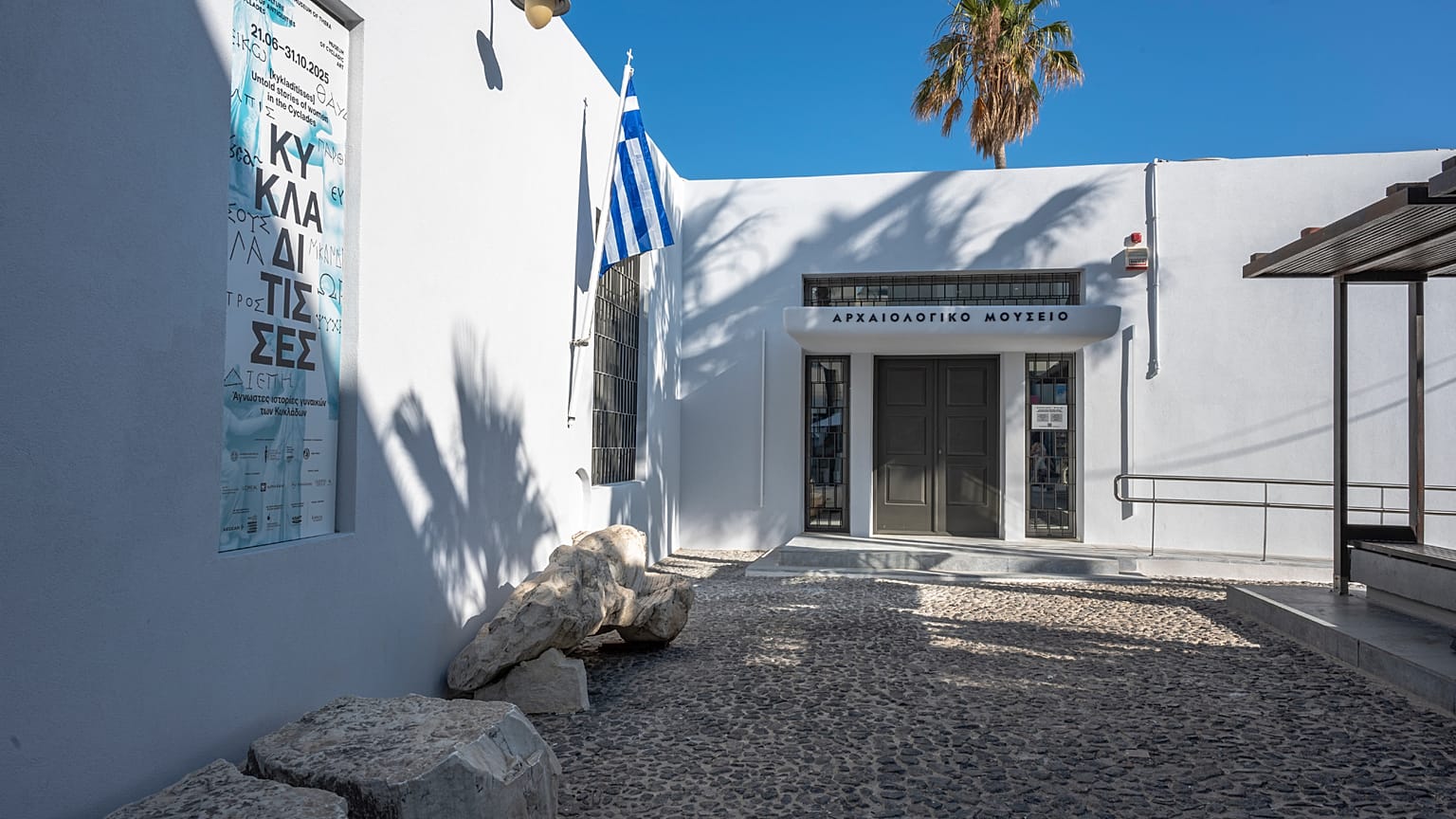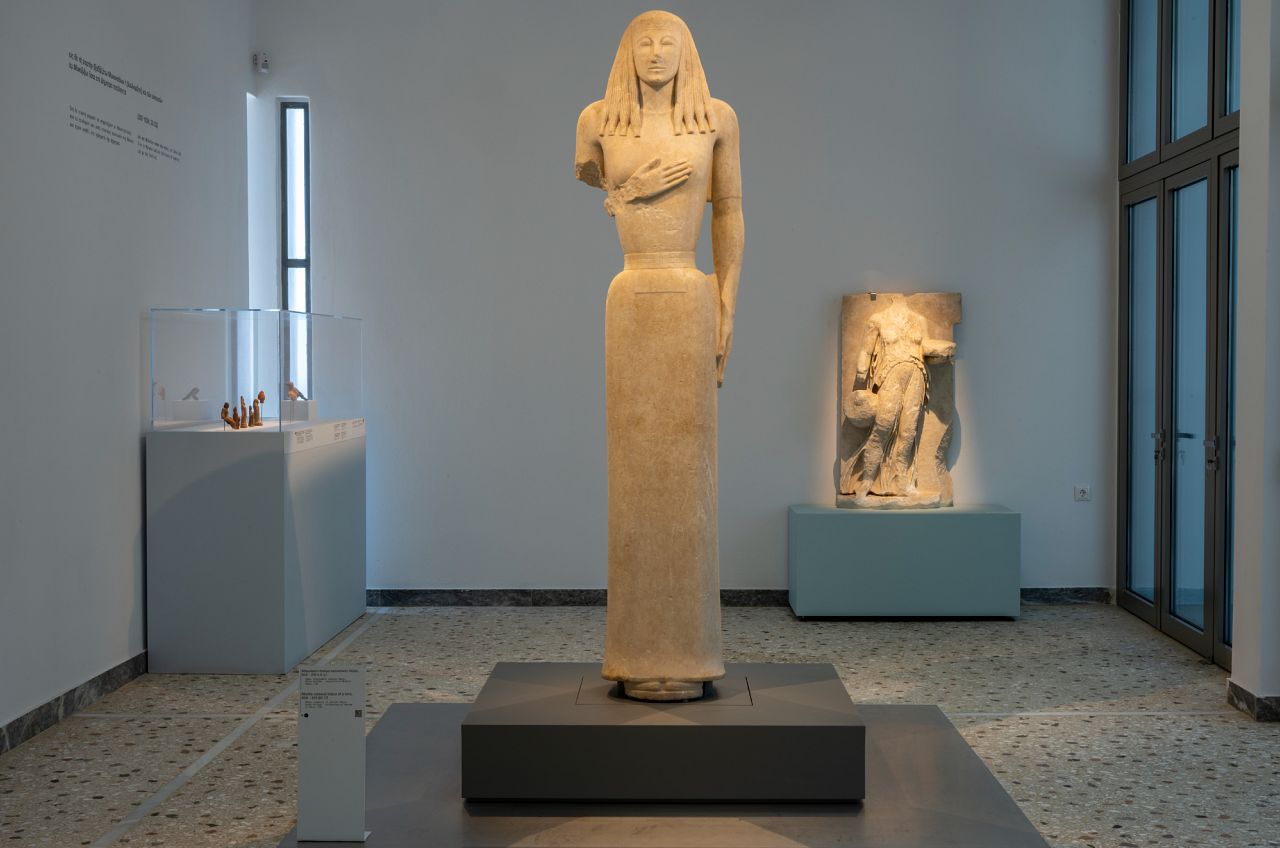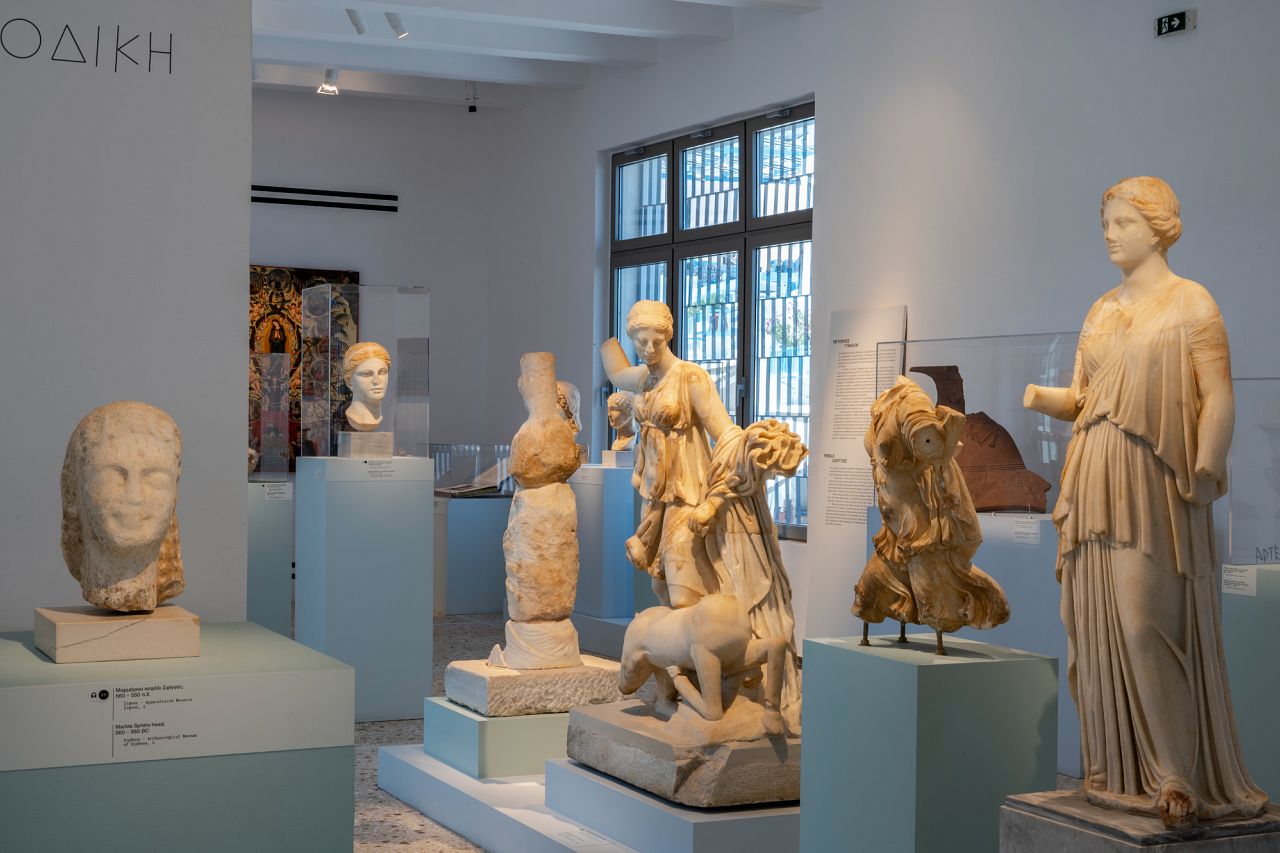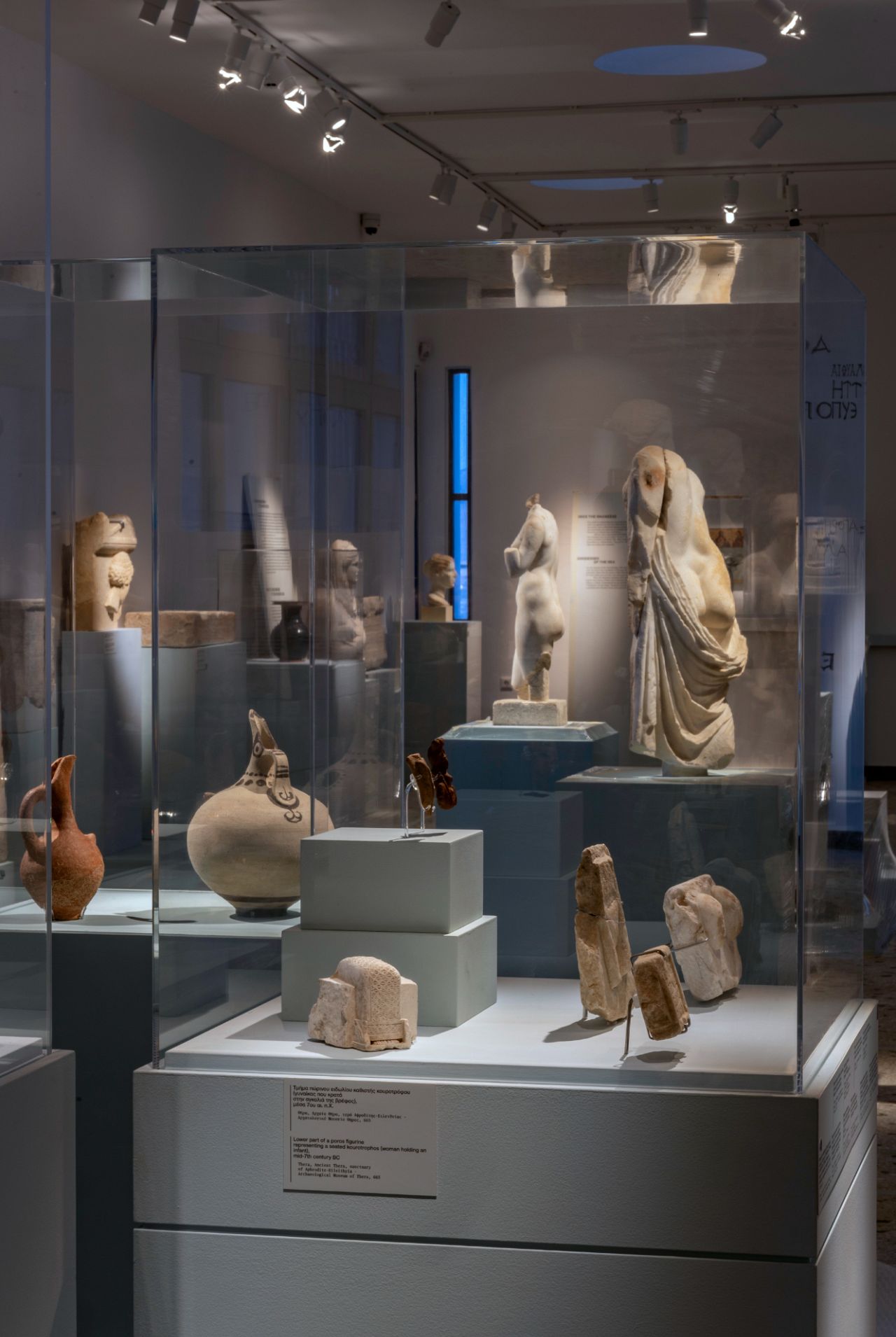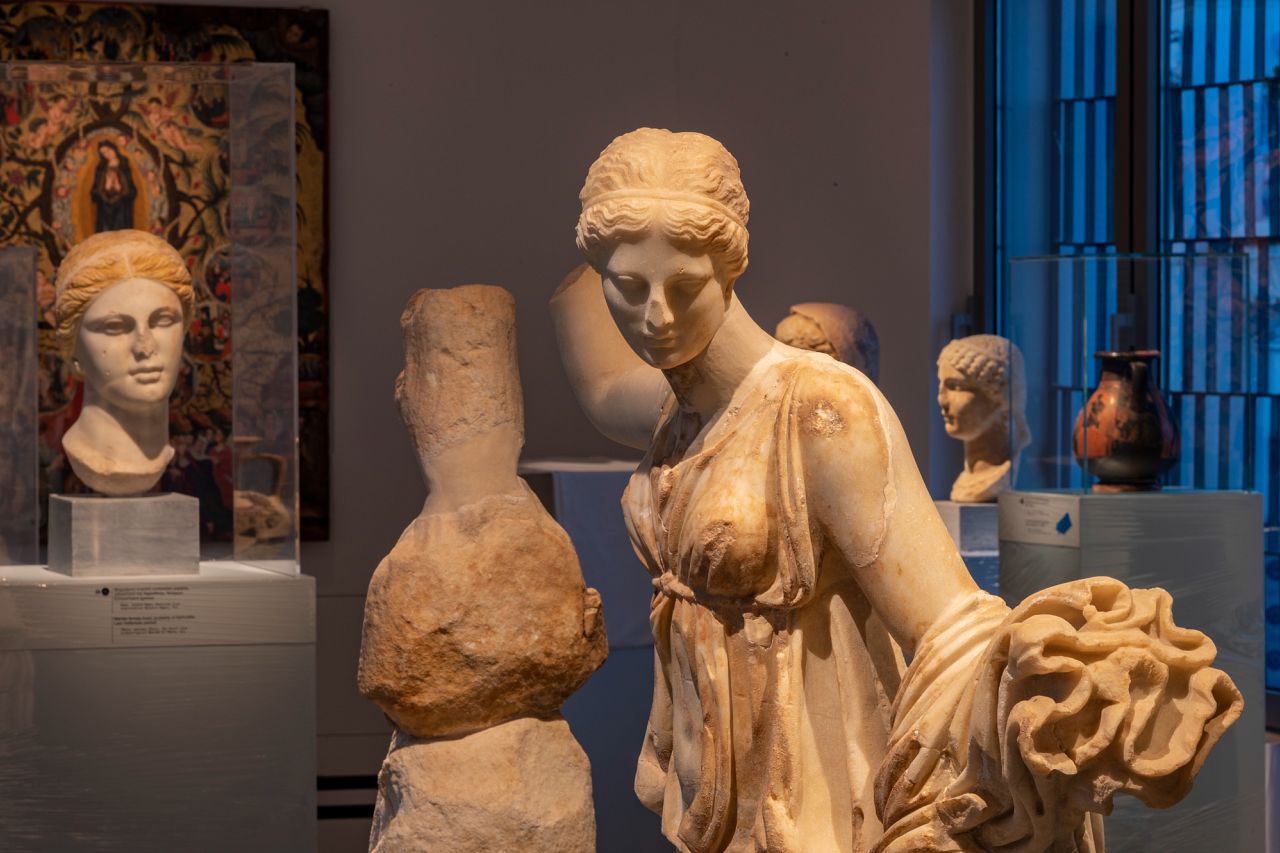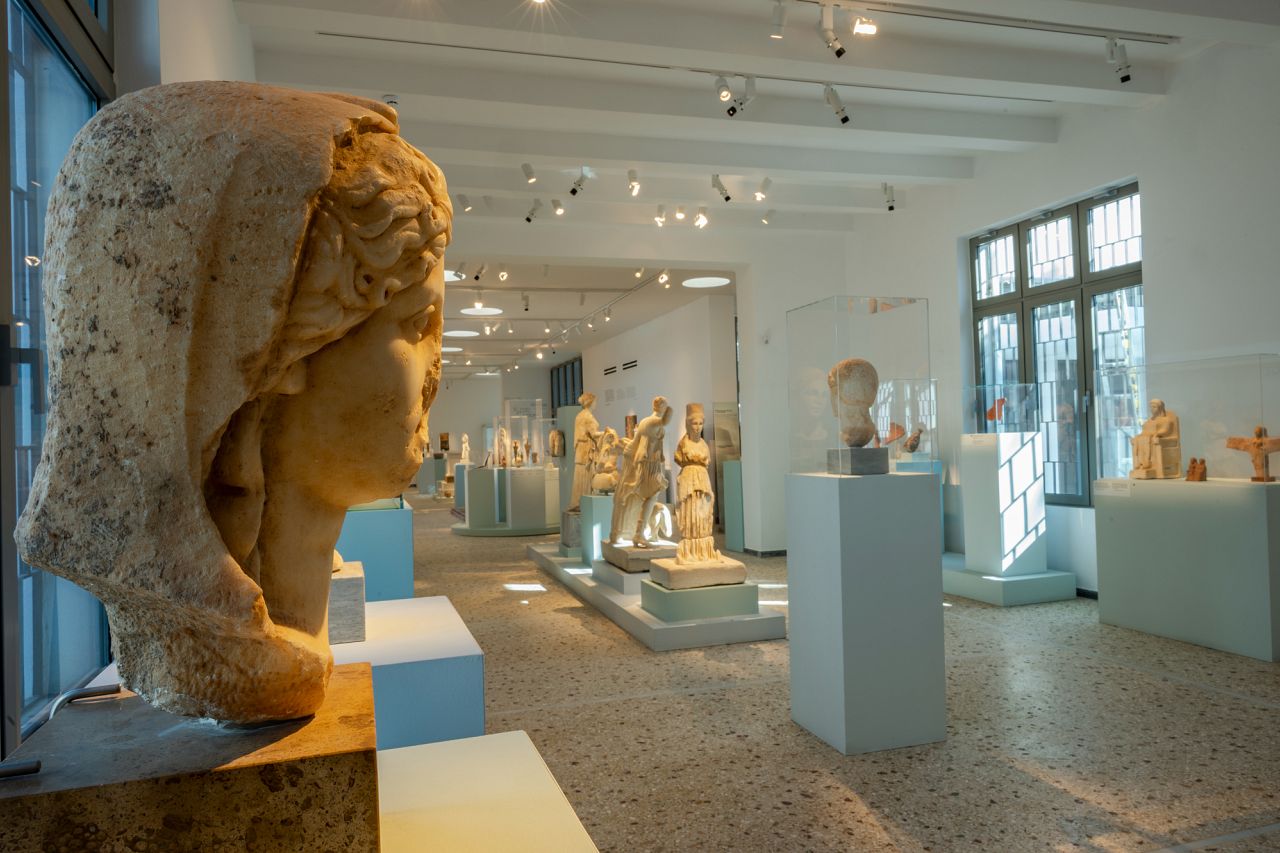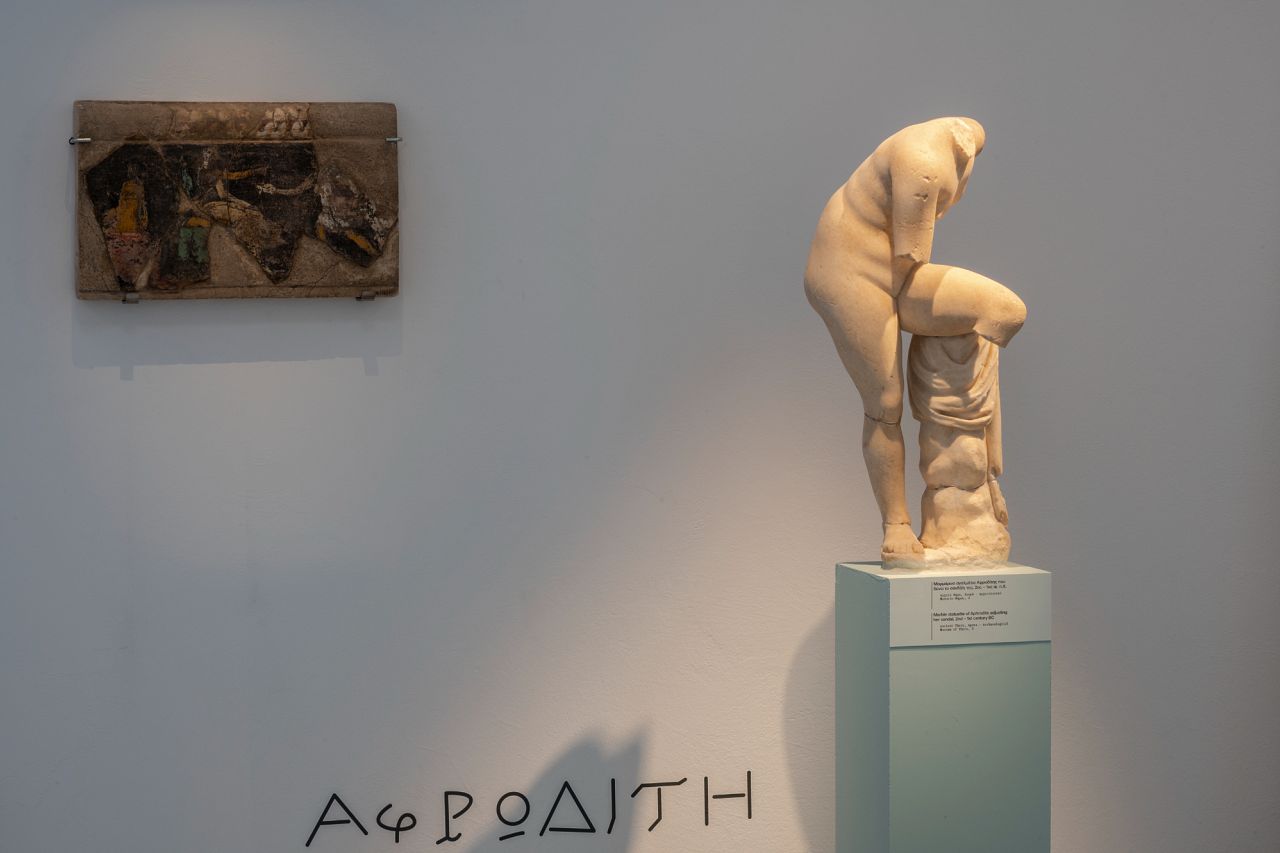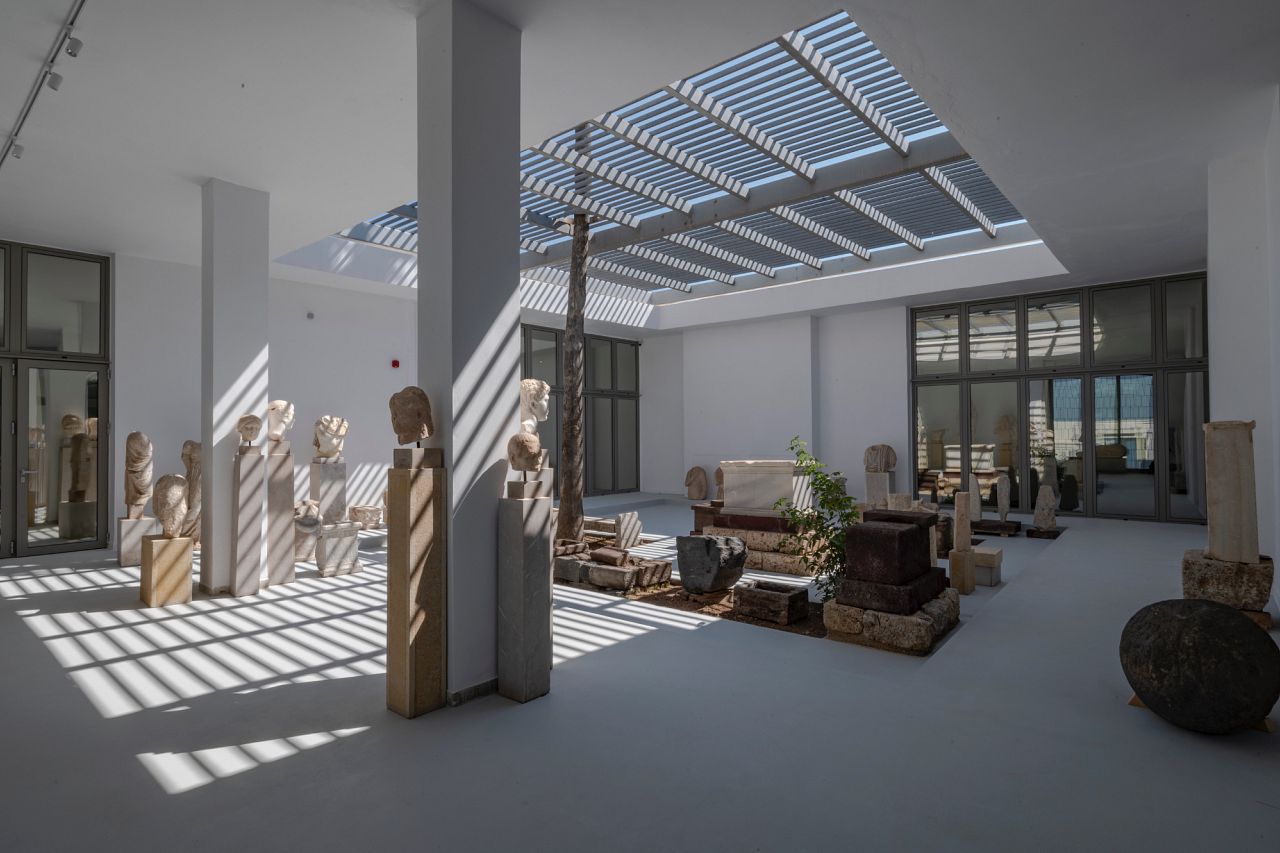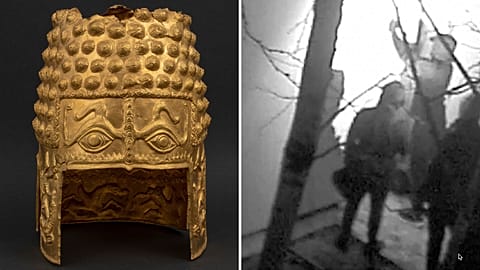The renovated Archaeological Museum of Thera opens with the acclaimed exhibition 'Cycladic Women: Unknown Stories', previously shown at the Museum of Cycladic Art in Athens.
After years of closure, the fully renovated Archaeological Museum of Thera in the heart of Santorini has reopened its doors - reviving a significant modernist building and enriching the island’s cultural offerings.
The building, originally constructed after the devastating 1956 earthquake, had long required extensive modernisation. With a €750,000 investment, the site was structurally reinforced, energy upgraded, made accessible, and outfitted with modern museum infrastructure.
Renovation highlights include restoring the original mosaic floor, skylights that flood the space with Cycladic light, glass windows, and the iconic palm tree in the atrium.
But the museum’s true centrepiece is the "Daughter of Thera" - a 2.48-metre marble statue from the Archaic period, unearthed in 2000 at Ancient Thera’s necropolis, Sellada.
After a study led by Professor Emeritus Vlassis Koumousis, the statue has been installed on a specially engineered seismic base developed by the National Technical University of Athens to protect it against earthquakes of up to magnitude 8.
Another major draw is the exhibition "Kykladitisses: Untold stories of women in the Cyclades", readapted from the Museum of Cycladic Art in Athens. It includes 180 rare artefacts - many shown for the first time or returning home to the Cyclades after decades. From figurines and frescoes to jewellery and funerary monuments, the exhibition explores the often-overlooked roles of women across Cycladic history: goddesses, merchants, priestesses, courtesans, migrants, and more.
“This is a historic day for us,” says Dr Dimitris Athanasoulis, Director of the Ephorate of Cycladic Antiquities. “We installed inside the museum, in its new permanent location, the famous Daughter of Thera. It is one of the most important examples of ancient Greek plastic art of the Archaic period."
He adds: "Our joy, as I said, is great, because Santorini, which has a huge wealth of monuments and museums, is endowed with another great museum, which will contain not only the Daughter but also the Cycladic women, the largest Pan-Cycladic exhibition ever organised and the largest archaeological exhibition ever organised in the Cyclades."
The exhibition aims to challenge gender stereotypes by highlighting the lives of Cycladic women in both public and private spheres - through love, death, religion, festivals, and community expectations.
There are 12 sections which explore their relationship with eroticism, death and mourning, their participation in religious events and Dionysian festivals, violence and the restrictions imposed on them by the community.
A statue of Aphrodite is featured in the section on eroticism, while the burial monument of Parthenika, a Theraic work, has been placed in such a way that its installation and its remains are in direct visual contact with the original monument in the museum's atrium.
Dr Panagiotis Joseph, Scientific Director of the Museum of Cycladic Art, describes the Santorini version of the show as “essentially another exhibition.”
"We have the same objects, the same narrative, but the space of the museum, its architecture, its lighting, this history that the building itself carries and the dialogue it has with both the caldera and the Cycladic light, to say something quite commonplace, have shaped the exhibition in a completely different way," he explains.
For the exhibition in Santorini, as well as in Athens, the Museum of Cycladic Art has created a complete bilingual audio guide, with narratives of the stories of the women of the Cyclades and the general theme of the exhibition. In addition, selected objects are accompanied by a QR-code through which visitors can read extensive and detailed information about the objects on their phones, using the Museum's app.
The Archaeological Museum of Thera is now open to the public and is dynamically integrated into the cultural map of the Cyclades. The temporary exhibition "Kykladitisses: Untold stories of women in the Cyclades" runs until 31 October.















